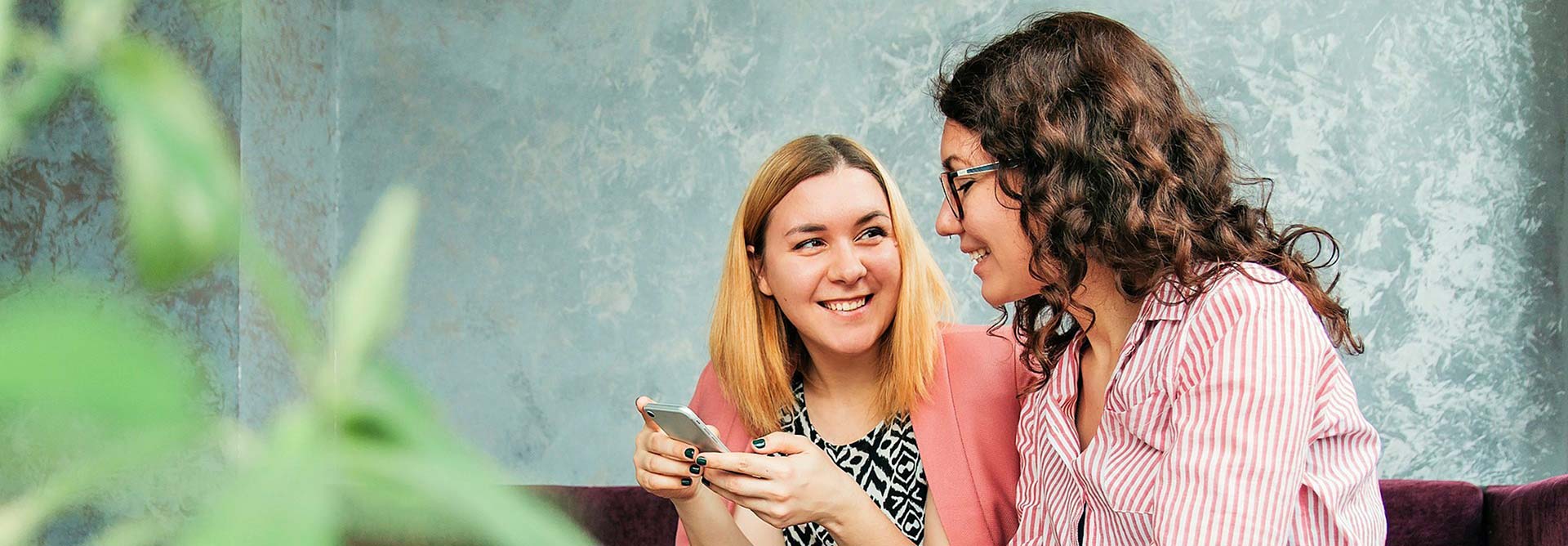
What is EMOVERE®?

Emotional Quotient (EQ) is a construct widely used in the individual context, but mostly inadequately conceived and rarely used in the context of groups. EMOVERE® assesses groups within your organisation, and provides a perceptive account of their emotional quotient, and of the consequent impact on the groups’ performances. Based on multiple models of conceptualising EQ, EMOVERE® defines ‘group emotional quotient’ as “the ability of a group as a collective to monitor, discriminate between, label appropriately, and use emotional information to guide collective thinking and behaviour”. Inspired in part by the Ability Model of EQ, EMOVERE® helps you strengthen groups within your organisation by providing an account of their abilities of perceiving, using, understanding and managing emotions.
Emotional Quotient (EQ) is a construct widely used in the individual context, but has been inadequately conceived for groups. EMOVERE® assesses groups to provide a perceptive account of their EQ and the impact on performance. EMOVERE® defines ‘group emotional quotient’ as “the ability of a group as a collective to monitor, discriminate between, label appropriately, and use emotional information to guide collective thinking and behaviour”. Inspired in part by the Ability Model of EQ, EMOVERE® helps strengthen performance of groups by assessing their abilities to perceive, use, understand and manage emotional information.
Emotional Quotient (EQ) is a construct widely used in the individual context, but has been inadequately conceived for groups. EMOVERE® assesses groups to provide a perceptive account of their EQ and the impact on performance. EMOVERE® defines ‘group emotional quotient’ as “the ability of a group as a collective to monitor, discriminate between, label appropriately, and use emotional information to guide collective thinking and behaviour”. Inspired in part by the Ability Model of EQ, EMOVERE® helps strengthen performance of groups by assessing their abilities to perceive, use, understand and manage emotional information.
Emotional Quotient (EQ) is a construct widely used in the individual context, but has been inadequately conceived for groups. EMOVERE® assesses groups to provide a perceptive account of their EQ and the impact on performance. EMOVERE® defines ‘group emotional quotient’ as “the ability of a group as a collective to monitor, discriminate between, label appropriately, and use emotional information to guide collective thinking and behaviour”. Inspired in part by the Ability Model of EQ, EMOVERE® helps strengthen performance of groups by assessing their abilities to perceive, use, understand and manage emotional information.
Why worry about "group EQ"? Why get EMOVERE®?
Significant research has been conducted on ‘effective constitution of teams’. Characteristics identified are a long list, and include: common purpose, identity, mutual respect and trust, complementarity, operating norms, team spirit and others. However, all these characteristics collectively cannot guarantee that a team will perform at its highest potential. This is where ‘group emotional quotient’ steps in and plays a necessary role in closing the loop. EMOVERE® assesses the EQ of groups by evaluating characteristics related to the processing of emotions in the group setting, including the perception of emotions, emotional trust, analysis of emotions, and emotion orchestration. Get EMOVERE® to equip your teams with abilities related to processing of emotions, thereby helping them to perform at their highest potential.
Research on ‘effective constitution of teams’ has led to a long list of characteristics, including: common purpose, identity, mutual respect and trust, complementarity, operating norms, team spirit and others. Yet, all these collectively cannot guarantee team performance at its highest level. ‘Group Emotional Quotient’ steps in here and closes the loop. EMOVERE® assesses Group EQ by evaluating the perception of emotions, emotional trust, analysis of emotions, and emotion orchestration. Get EMOVERE® to arm your organisational units with EQ and help them perform to their potential.
Research on ‘effective constitution of teams’ has led to a long list of characteristics, including: common purpose, identity, mutual respect and trust, complementarity, operating norms, team spirit and others. Yet, all these collectively cannot guarantee team performance at its highest level. ‘Group Emotional Quotient’ steps in here and closes the loop. EMOVERE® assesses Group EQ by evaluating the perception of emotions, emotional trust, analysis of emotions, and emotion orchestration. Get EMOVERE® to arm your organisational units with EQ and help them perform to their potential.
Research on ‘effective constitution of teams’ has led to a long list of characteristics, including: common purpose, identity, mutual respect and trust, complementarity, operating norms, team spirit and others. Yet, all these collectively cannot guarantee team performance at its highest level. ‘Group Emotional Quotient’ steps in here and closes the loop. EMOVERE® assesses Group EQ by evaluating the perception of emotions, emotional trust, analysis of emotions, and emotion orchestration. Get EMOVERE® to arm your organisational units with EQ and help them perform to their potential.

Who will benefit from EMOVERE®?

Collectives at different levels, in different places and with different compositions will benefit from EMOVERE®. One such category of groups is ‘committees’ comprising individuals at senior levels, who are often from different functions or divisions, and entrusted with oversight and guidance in matters of importance. Another category that will benefit is ‘cross-functional teams’ which often suffer from disjointed goals and disparate motivations of constituent individuals. Yet another beneficiary will be ‘project teams’ that exist for specified time duration and for a determinate purpose. Besides committees and teams, EMOVERE® will benefit ‘operating groups’ which are of greater permanence and stable composition. Mishandling of emotional aspects of such groups could gravely injure their performance and even destabilise operations.
EMOVERE® benefits collectives of different levels, places and compositions within business organisations. First, ‘committees’ comprising individuals at senior levels, often from different functions or divisions, and entrusted with oversight in matters of importance. Second, ‘cross-functional teams’, often suffering from disjointed goals and disparate motivations. Third, ‘project teams’ existing for a specified duration and a determinate purpose. Finally, ‘operating groups’ of greater permanence and stable composition. Emotional mishandling of such groups could injure business performance and even destabilise operations.
EMOVERE® benefits collectives of different levels, places and compositions within business organisations. First, ‘committees’ comprising individuals at senior levels, often from different functions or divisions, and entrusted with oversight in matters of importance. Second, ‘cross-functional teams’, often suffering from disjointed goals and disparate motivations. Third, ‘project teams’ existing for a specified duration and a determinate purpose. Finally, ‘operating groups’ of greater permanence and stable composition. Emotional mishandling of such groups could injure business performance and even destabilise operations.
EMOVERE® benefits collectives of different levels, places and compositions within business organisations. First, ‘committees’ comprising individuals at senior levels, often from different functions or divisions, and entrusted with oversight in matters of importance. Second, ‘cross-functional teams’, often suffering from disjointed goals and disparate motivations. Third, ‘project teams’ existing for a specified duration and a determinate purpose. Finally, ‘operating groups’ of greater permanence and stable composition. Emotional mishandling of such groups could injure business performance and even destabilise operations.
Where (in which settings) should you get EMOVERE®?
Get EMOVERE® for teams within your organisation if you notice any of the following five indications. First is when you witness that a group has repeatedly not performed to its fullest potential, despite the existence of team hygiene factors and organisation support. Chances are that ‘group emotional quotient’ is the missing link. Second is when you believe that the group’s composition includes a number of individuals with poor levels of individual EQ. Third is when you notice a group’s continued inability to sense emotional signals in its ecosystem. Fourth is when you are convinced about a lack of collective communication and analysis of the emotional states of stakeholders outside the group. Fifth is when a group is collectively unable to regulate, coordinate and harness the emotional expressions of its constituent members.
Get EMOVERE® for groups and performance units if you notice any of the following five indications. First, when a group with strong performers has repeatedly not performed to its potential. Second, when the group includes a number of members who have poor levels of individual EQ. Third, when you notice a group’s continued inability to sense emotional signals in its ecosystem. Fourth, when a group does not engage upon and analyse the emotional states of stakeholders outside the group. Fifth, when a group is unable to regulate, coordinate and harness the emotional expressions of its constituent members.
Get EMOVERE® for groups and performance units if you notice any of the following five indications. First, when a group with strong performers has repeatedly not performed to its potential. Second, when the group includes a number of members who have poor levels of individual EQ. Third, when you notice a group’s continued inability to sense emotional signals in its ecosystem. Fourth, when a group does not engage upon and analyse the emotional states of stakeholders outside the group. Fifth, when a group is unable to regulate, coordinate and harness the emotional expressions of its constituent members.
Get EMOVERE® for groups and performance units if you notice any of the following five indications. First, when a group with strong performers has repeatedly not performed to its potential. Second, when the group includes a number of members who have poor levels of individual EQ. Third, when you notice a group’s continued inability to sense emotional signals in its ecosystem. Fourth, when a group does not engage upon and analyse the emotional states of stakeholders outside the group. Fifth, when a group is unable to regulate, coordinate and harness the emotional expressions of its constituent members.

How does EMOVERE® work?

The design of EMOVERE® is based on its proprietary five-part framework called ‘UPTRO Group EQ’. With EMOVERE®, you undergo the four stages of ‘installation’, ‘engagement’, ‘analysis’ and ‘dissemination’ over eight weeks. To install EMOVERE®, you outline the indicators of poor group EQ; establish scope by nominating specific groups as subjects; and identify research respondents. EMOVERE® then engages with these respondents, and analyses obtained inputs based on the product’s proprietary framework. One strand of analysis is the comparing and contrasting of the EQ of different groups in order to draw organisational patterns and implications. The research output for leadership includes qualitative and narrative descriptions supplemented by quantitative analysis.
EMOVERE® is designed based on our proprietary framework called ‘UPTRO Group EQ’. The four stages of ‘installation’, ‘engagement’, ‘analysis’ and ‘dissemination’ take place over eight weeks. To install, you outline the indicators of poor group EQ; nominate specific groups as subjects; and identify research respondents. EMOVERE® then engages with these respondents and analyses the inputs. In addition, EMOVERE® compares and contrasts the EQ accounts of different groups to draw organisation-wide patterns and implications. EMOVERE® output includes narrative descriptions supported by quantitative analysis.
EMOVERE® is designed based on our proprietary framework called ‘UPTRO Group EQ’. The four stages of ‘installation’, ‘engagement’, ‘analysis’ and ‘dissemination’ take place over eight weeks. To install, you outline the indicators of poor group EQ; nominate specific groups as subjects; and identify research respondents. EMOVERE® then engages with these respondents and analyses the inputs. In addition, EMOVERE® compares and contrasts the EQ accounts of different groups to draw organisation-wide patterns and implications. EMOVERE® output includes narrative descriptions supported by quantitative analysis.
EMOVERE® is designed based on our proprietary framework called ‘UPTRO Group EQ’. The four stages of ‘installation’, ‘engagement’, ‘analysis’ and ‘dissemination’ take place over eight weeks. To install, you outline the indicators of poor group EQ; nominate specific groups as subjects; and identify research respondents. EMOVERE® then engages with these respondents and analyses the inputs. In addition, EMOVERE® compares and contrasts the EQ accounts of different groups to draw organisation-wide patterns and implications. EMOVERE® output includes narrative descriptions supported by quantitative analysis.
When during the operating year should you get EMOVERE®?
EMOVERE® is designed for annual as well as episodic usage. EMOVERE® requires eight weeks for the ‘installing’, ‘engaging’, ‘analysing’ and ‘disseminating’ phases. EMOVERE® can be used on an annual cycle for longstanding teams such as operating groups within performance units. While doing so, we recommend usage during the fourth or first quarters, for two reasons. First, research conducted at this time can be conveniently incorporated into the group’s functioning for the entire year. Second, the task of responding to research questions will likely make group members more mindful and aware of their abilities to process emotion, thereby aiding ongoing performance. This is of strong benefit in the fourth quarter. When you use EMOVERE® episodically, we do not recommend a timing.
EMOVERE® is designed for annual as well as episodic usage. EMOVERE® is used annually for permanent teams such as operating groups. We recommend product usage during either the fourth or first quarter. When used at these times, research output is conveniently incorporated into the group's functioning for the entire year. Moreover, the act of responding to research questions makes group members more mindful and aware of their abilities to process emotion, thereby aiding performance. Such performance lift is of strong relevance in the fourth quarter. For using EMOVERE® episodically, there is no preferred timing.
EMOVERE® is designed for annual as well as episodic usage. EMOVERE® is used annually for permanent teams such as operating groups. We recommend product usage during either the fourth or first quarter. When used at these times, research output is conveniently incorporated into the group's functioning for the entire year. Moreover, the act of responding to research questions makes group members more mindful and aware of their abilities to process emotion, thereby aiding performance. Such performance lift is of strong relevance in the fourth quarter. For using EMOVERE® episodically, there is no preferred timing.
EMOVERE® is designed for annual as well as episodic usage. EMOVERE® is used annually for permanent teams such as operating groups. We recommend product usage during either the fourth or first quarter. When used at these times, research output is conveniently incorporated into the group's functioning for the entire year. Moreover, the act of responding to research questions makes group members more mindful and aware of their abilities to process emotion, thereby aiding performance. Such performance lift is of strong relevance in the fourth quarter. For using EMOVERE® episodically, there is no preferred timing.

© Copyright 2019  All rights reserved.
All rights reserved.
© Copyright 2019  All rights reserved.
All rights reserved.
© Copyright 2019  All rights reserved.
All rights reserved.
© Copyright 2019  All rights reserved.
All rights reserved.
